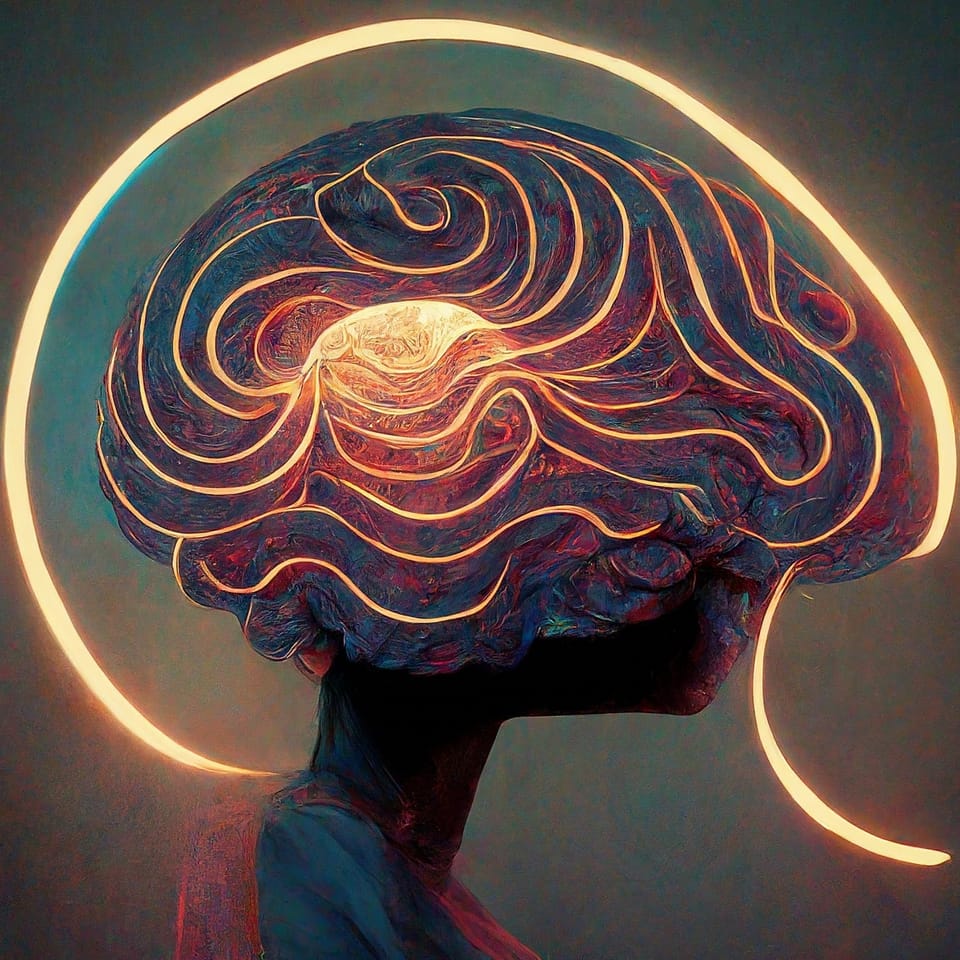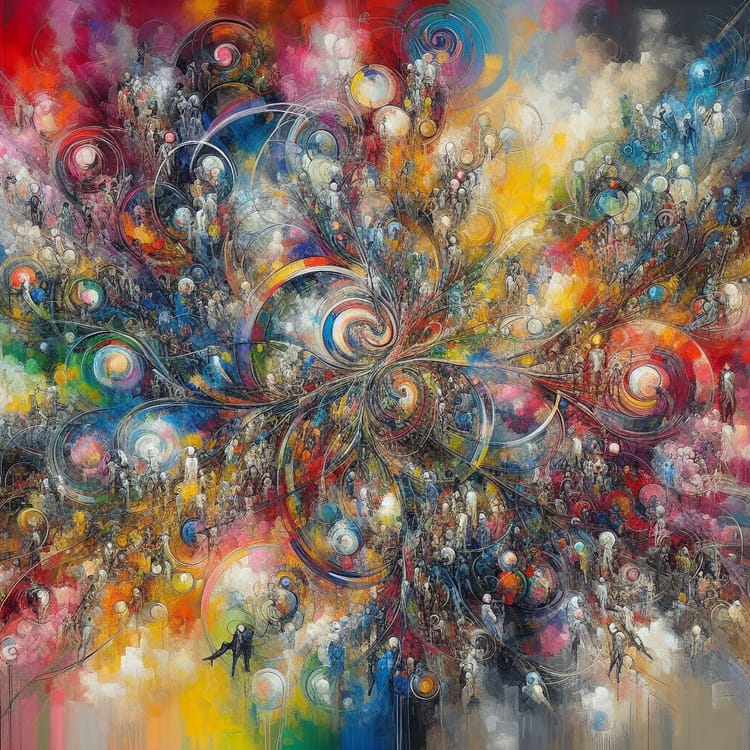Optoceutics

This is a very self-serving newsletter because I'm on the board of Optoceutics. I'm also immensely proud of this co-founders Mai and Markus and what they have built. In fact, I'm literally using their tool right now, as I do every morning. So, let's spend this week learning about Optoceutics and the science of neuromodulation.
You want to support my work but don't need a keynote from a mad scientist? Please become a paid subscriber to this newsletter and recommend to friends!
Mad Science Solves...
This week I’m making an unashamed plug for one of my companies. Optoceutics was founded in 2018 by Mai and Markus, two brilliant and (relative to me) young scientists. Inspired by new research, they combined a trick of psychophysics and a hack of the brain to do something amazing: make a difference in the lives of people struggling with Alzheimer’s and dementia.
From those hacker beginnings, they have built a company with roots in both Copenhagen and Berkeley, and a mission to give everyone more years of quality life. I joined this mission a few years ago as a board member and science advisor. I’ve been looking at noninvasive neuroprosthetics for years in search of therapies for traumatic brain injury, stroke recovery, and chronic depression. Mai and Markus had developed a device that could support treatment of many conditions, starting dementia, but rather than a complex system of electrodes, it was a (not so) simple light—one I could read a book by.
Every morning, before my family wakes, I sit before my computer to write chapters for upcoming books or code for mad science projects. Beside me is a cup of pu erh tea and before me, just beneath the screen, is Optoceutic’s EVY Light. For an hour or more each morning, I engage my brain through effortful creation while also stimulating it at 40 Hz with an “invisible spectral flicker”. I use it and boost it together. Why? Read the Research Roundup below, or take a look at the copious research collected on Optoceutics website.
After a late start in life, I want to be me for as long as science and good fortune allow. I don’t want depression or dementia taking me away from my family or from the work to which I’ve dedicated my life. That means managing chronic stress, engaging deeply in the world around me, and shining a light in the darkness.
To support this work, you ought to visit Optoceutics and buy an EVY Light! They’re available in the US and EU.
You know what, just to be safe, you should probably also book me for a keynote!
Weekly Indulgence

Here I am delivering "The Paradox of Incentive Insensitivity" for TED. You might nor be able to tell, but I was brutally ill that day. Stages are like magic—all the bad things disappear…until you step off and return to the real world of fevers and chills.
Stage & Screen
My Spring is quickly filling up (and even next Fall)!
- Apr 16, LA: Come see How to Robot-Proof Your Kids with the LA School Alliance.
- We're setting up more event as I write. Want to host: book me at a discount!
- May 8, Boston: chatting with BCG on lifting Collective Intelligence and The Neuroscience of Trust.
- May 8-10, Santa Clara: I return to Singularity University
- May 23, Seoul: keynoting the Asian Leadership Conference! (from last year)
- Mid-June, UK & EU: Buy tickets for the Future of Talent Summit and so much more!
- July, DC: Keynote at Jobs For the Future Horizons!
- Early Bird registration is open.
- Next Fall: Out in Tech! Singapore! Paris! and so much more!!!
If your company, university, or conference just happen to be in one of the above locations and want the "best keynote I've ever heard" (shockingly spoken by multiple audiences last year)?
<<Please support my work: book me for a keynote or briefing!>>
Research Roundup
Hard Thinkin’ Clears the Gutters
When I was a grad student, at the top of my personal website was “What if it was 20 plus or minus 2?” I was speculating (wildly) about the effects of cognitive neuroprosthetics on human potential, specifically in that case working memory. At the time, these technologies still felt like science fiction. Today, initial versions of cognitive prosthetics are entering our world and changing lives.
One domain with which I am intimately familiar are neuromodulation technologies that use electricity or lights to upregulate brain activity. At Optoceutics, where I’m a board member and science advisor, we use masked light at 40 Hz to both transiently boost cognitions and, more importantly, improve cognitive health. Now some new papers reveal how this works.
(Don’t worry about the details if you're not a neuroscientist; get excited for brain health!)
Through both our stimulation or natural cognitive effort “neural networks synchronize individual action potentials”, simultaneously lowering total brain activity while improving the speed and efficacy of neural activity. This synchronization in turn drives “large-amplitude, rhythmic and self-perpetuating ionic waves in the interstitial fluid of the brain”. These waves promote glymphatic clearance, lowering the “accumulation of metabolic waste” that cause “numerous neurological disorders”.
In the experiment, artificially flattening these waves inhibits clearance of harmful molecules, while inducing artificial waves “substantially potentiated cerebrospinal fluid-to-interstitial fluid perfusion”.
So, how do we induce these waves in humans? The most obvious is thinking deeply. Use your brains and it takes care of ourselves. But the efficacy of this drops as we age, and for many with brain trauma help is needed. Enter neuromodulation. We’ll dive into the last paper in my next post.
Brain Surfing
My last post shared new research revealing how synchronized activity in the brain drives ionic waves in interstitial fluid and clearing out metabolic waste. We generate these waves naturally by thinking deeply and effortfully. So, taking a different route to work every day literally helps clear the accumulating junk out of your brain. But as we age, this synchronization decreases, and those recovering from TBI or stroke have additional barriers. How can we support health clearing over time?
My company, Optoceutics, and others have been researching neuromodulation technologies for years. Through electrical or (in our case) sensory stimulation, these therapies induce increased Gamma (40 Hz) activity in the brains, enhancing cognitions and supporting cognitive health. The research referenced above shows how natural neural synchronization clears the gutters; another new paper reveals how 40 Hz stimulation does the same.
40 Hz sensory stimulation “promotes the influx of cerebrospinal fluid and the efflux of interstitial fluid”, facilitating “glymphatic clearance by regulating arterial pulsatility”. (Who doesn’t love a sentence with words like glymphatic and pulsatility!) Much as with the first paper, blocking the mode of action, glymphatic clearance, “abolished” positive effects of 40 Hz stimulation.
My regiment to healthy aging: Think hard. Always ask why. Take a different route to work every day. …and boost it all with a little flicking light.
SciFi, Fantasy, & Me
The best thing I read or watched last week definitely wasn’t scifi and wasn’t technically fantasy. It was, however, rather amazing. Blue Eye Samurai on Netflix is most definitely “adult” animation, a story of race and identity and revenge, with rather brutal fight scenes and many metaphorical…peaches.
In recent years I’ve been more attracted to the absurd, fantastical, and comedic, but the art and characters of Blue Eyed Samurai pulled my attention as few dramatic series have done in some time.
| Follow more of my work at | |
|---|---|
| Socos Labs | The Human Trust |
| Dionysus Health | Optoceutics |
| RFK Human Rights | GenderCool |
| Crisis Venture Studios | Inclusion Impact Index |
| Neurotech Collider Hub at UC Berkeley |




